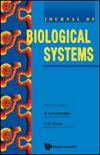用于评估登革热在巴西分布的连续时空数学模型
IF 1.5
4区 数学
Q3 BIOLOGY
引用次数: 0
摘要
在本文中,我们开发了一个反应-扩散数学模型的最优控制,描述了登革热感染的空间传播。模型中考虑了人类和媒介种群的隔间,包括蚊子水生阶段的隔间。这使我们能够使用不同场景的人口统计数据,在二维领域讨论垂直传播对疾病传播的影响。对模型进行了分析,建立了模型弱解的存在性和收敛性。证明了数值格式对弱解的收敛性。对于数值逼近,我们采用有限元格式来求解直接和伴随状态系统。我们还使用非线性梯度下降方法来解决最优控制问题,其中提出了政府投资的最优管理,并导致更有效的登革热感染控制。这些结果可能有助于我们了解登革热驱动的复杂动态,并评估控制该疾病的公共卫生政策。本文章由计算机程序翻译,如有差异,请以英文原文为准。
A CONTINUOUS SPATIAL AND TEMPORAL MATHEMATICAL MODEL FOR ASSESSING THE DISTRIBUTION OF DENGUE IN BRAZIL WITH CONTROL
In this paper, we developed an optimal control of a reaction–diffusion mathematical model, describing the spatial spread of dengue infection. Compartments for human and vector populations are considered in the model, including a compartment for the aquatic phase of mosquitoes. This enabled us to discuss the vertical transmission effects on the spread of the disease in a two-dimensional domain, using demographic data for different scenarios. The model was analyzed, establishing the existence and convergence of the weak solution for the model. The convergence of the numerical scheme to the weak solution was proved. For numerical approximation, we adopted the finite element scheme to solve direct and adjoint state systems. We also used the nonlinear gradient descent method to solve the optimal control problem, where the optimal management of government investment was proposed and leads to more effective dengue fever infection control. These results may help us understand the complex dynamics driven by dengue and assess the public health policies in the control of the disease.
求助全文
通过发布文献求助,成功后即可免费获取论文全文。
去求助
来源期刊
CiteScore
2.80
自引率
12.50%
发文量
31
审稿时长
1 months
期刊介绍:
The Journal of Biological Systems is published quarterly. The goal of the Journal is to promote interdisciplinary approaches in Biology and in Medicine, and the study of biological situations with a variety of tools, including mathematical and general systems methods. The Journal solicits original research papers and survey articles in areas that include (but are not limited to):
Complex systems studies; isomorphies; nonlinear dynamics; entropy; mathematical tools and systems theories with applications in Biology and Medicine.
Interdisciplinary approaches in Biology and Medicine; transfer of methods from one discipline to another; integration of biological levels, from atomic to molecular, macromolecular, cellular, and organic levels; animal biology; plant biology.
Environmental studies; relationships between individuals, populations, communities and ecosystems; bioeconomics, management of renewable resources; hierarchy theory; integration of spatial and time scales.
Evolutionary biology; co-evolutions; genetics and evolution; branching processes and phyllotaxis.
Medical systems; physiology; cardiac modeling; computer models in Medicine; cancer research; epidemiology.
Numerical simulations and computations; numerical study and analysis of biological data.
Epistemology; history of science.
The journal will also publish book reviews.

 求助内容:
求助内容: 应助结果提醒方式:
应助结果提醒方式:


